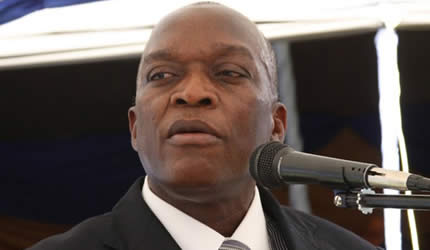Developing and managing the mineral wealth of Zimbabwe for tomorrow
African countries, mineral exploration and production constitute significant parts of their economies and remain keys to economic growth.
The continent is richly endowed with mineral reserves and ranks first or second in quantity of world reserves of bauxite, cobalt, industrial diamond, phosphate rock, platinum-group metals (PGM), vermiculite, and zirconium. Gold mining is Africa’s main mining resource.
However, in spite of this rich mineralisation African countries are still wallowing in poverty. The primary problem has been the racist and colonial natural resource laws in Africa which empower the investor at the expense of the citizenry who are the bona fide owners of the resource.
Based on this flawed framework most of the mining deals and activities on the continent have been opaque and detrimental to Africans. Corruption by both public sector and private sector players has compounded the malaise. Secondly, mining in Africa has been largely extractive without beneficiation or value addition.
This has led to African countries exporting cheaply priced raw commodities, while importing expensive refined products. The lack of meaningful benefits to African people from their natural resources is a key part of what is currently being described as leakage of resources from the continent.
African leaders and industrialists need to make a lot more noise about the leakage of money from the continent. Plugging the leaks is one of the major ways of keeping Africa’s growth steady. If this is addressed we will have enough resources on the continent. We will have sufficient investable capital from the continent. This will smash the current unsustainable overdependence on foreign aid and foreign direct investment.
Intra Africa investment and investment outflows from the continent into the rest of the world will become practical propositions.
African governments and societies must harness the opportunities created by natural resources effectively. They must ensure the huge opportunities for economic development and prosperity provided by resource discoveries and commodity booms will never again be missed. Some of the poorest countries in Arica have large amounts of natural resources and these can provide a pathway out of poverty.
Yet in the past, these opportunities have often been missed, and resource abundant countries have consequently remained poor. Natural resources have the potential to be transformative if they are properly harnessed for development.
However, the decision chain from the discovery of natural assets through to their conversion into a productive economy is long and complex. This is why the process has so often been unsuccessful on the African Continent. Africa is too rich to be poor.
It is within this continental context that we assess Zimbabwe’s mineral strength and how it can be leveraged to improve the quality of our people’s lives. The recent work of Paul Jordan and ZEPARU has been instructive in identifying the key policy issues with respect to the mining sector in Zimbabwe, in particular around geological and mineralization issues.
Their research findings must inform and lay foundation to discussions in the Chamber of Mines. Zimbabwe has a rich and diverse minerals resource base that should be an important contributor to sustainable growth and development. The sector has rebounded dramatically from the hyperinflation economic crisis and with dollarisation the value of mineral production has increased six-fold to about $3 billion in 2011.
However, if this increased mining activity is to ultimately result in more than just holes-in-the-ground, the crucial mineral linkages need to be realized while the resources are still extant.
Zimbabwe has an extensive mineral value proposition. These mineral assets are mainly found in the following geological formations and bodies: The Greenstone Belts: Gold and silver, as well as considerable resources of iron ore, nickel, copper, cobalt and podiform chromite, also chrysotile asbestos (Mashaba Igneous Complex), limestone, pyrite and antimony; The Great Dyke: PGMs5 & Au with associated copper, nickel and cobalt. Also, chromium (chromite seams), as well as minor asbestos and magnesite; The Magondi Super group: Copper and silver (Dewera Group); The Karoo Basins: Considerable bituminous coal, coking coal, anthracite and coal-bed methane (CBM) resources; The Carbonatite Igneous Complexes:, phosphate (Dorowa, Showa); Kimberlite pipes: diamonds (Murowa, River Ranch); Pegmatites: Lithium minerals, columbite-tantalite, cassiterite, et al; Recent alluvial & placer deposits: Gold and diamonds (from Umkondo conglomerates).
Paul Jordan and his colleagues have emphasized that in order to optimise the economic linkages the current “colonial” minerals governance regime of “free mining” needs to be fundamentally overhauled to both encourage the discovery of new mineral deposits and to maximise the developmental impact of known mineral assets through public tender against developmental outcomes.
In this regard a Mineral Cadastre Information Management System (MCIMS) being developed by the Ministry needs to be operationalised quickly. The current historically high mineral prices fuelled by strong Asian appetite are likely to continue for the next couple of decades, so long as the major Chinese and Indian economies continue to display robust growth. Zimbabwe needs to take advantage of this window of opportunity to use its finite mineral resources endowment to catalyse wider national economic growth and development through the maximisation of the key economic linkages.
Zimbabwe’s mining sector has continued to be the lead in economic performance, contributing an estimated 16 percent to GDP in 2012, up from 13 percent in 2011. The sector also continued to lead in export earnings, rising to USD2 billion in 2012, from USD1.8 billion in 2011.
The major drivers of this growth in export earnings were diamonds, platinum and gold. Overall, mineral production maintained its upward trend, meeting most Medium Term Plan (MTP) projections for 2012. This year, 2013, looks no different, assuming the current momentum is maintained.
Militating against higher growth rates, however, is the unavailability of medium to long term credit facilities for working capital and recapitalization requirements as well as perennial power shortages.
These enablers, if they remain unresolved, will continue to be major impediments to potential growth targets. Being number six in the world in terms diamond resource (potential control of about 25 percent of world diamonds), having 90 percent of world platinum between us and SA, and having extensive Gold deposits, Zimbabwe has massive natural resource potential. In fact, in terms of what is called the natural resource per capita we are number one in the world. So, why are we poor? Why are we hungry?
This 74th AGM of the Chamber is fortuitous as it occurs while we are currently fashioning a new mining policy framework leading to new Mines and Minerals Act. This policy seeks to ensure the sustainable development of the mining industry and its contribution to the economy.
The current Mines and Minerals Act is clearly now an archaic piece of legislation which is in dire need of upgrading to bring it up to date with modern trends in the global mining industry and the country’s current and future aspirations. More specifically and accurately the current Act is a colonial law that empowers the investor at the expense of national interest.
The Government is working on having this Act repealed in its entirety and have it replaced by a totally new Mines and Minerals Act that caters for the dynamic modern day needs of the sector, while resolving historical institutional injustices.
Mining in itself is clearly not sustainable, as it depletes finite national assets. However, mineral extraction can indirectly become sustainable in so far as it catalyses sustainable economic activity in other, sustainable, sectors, through maximising the economic linkages while the resource is still in existence.
Strategies to develop these complex and diverse linkages are therefore key elements of the new mining policy. Mining proceeds must be used to develop secondary industries linked to the minerals, and other industries not linked to mining at all. Schools, hospitals, roads and community housing must also be spear headed by mining activities. This way, when the mineral resource is exhausted the Zimbabwean economy and its communities can continue to flourish.
In redesigning the mining policy and laws in Zimbabwe we seek to achieve sustainable exploration, extraction, utilization, management, marketing and beneficiation of minerals.
The objective is to understand the status quo, and then fashion a framework for developing and managing the mineral wealth of Zimbabwe for posterity. The foundational objective is to ensure sustainable, shared and inclusive economic development of the country. A key reform of the mining laws is that the right to mine should be linked to payment for the value of the un-mined asset.
As the State we must know the value of each mineral claim. This requires comprehensive knowledge of our geology and mineralization. Quantification and valuation of the un-mined asset should be done before engaging investors. New technologies such aero-magnetics, big data, and cloud computing must be deployed. The state must invest massive resources in exploration
The difference between working capital and equity capital must be understood and factored in all mining deals. The value of the un-mined asset is the country’s contribution to equity and the investor must acknowledge and match this. The investor’s contribution to equity must not be confused with working capital they deploy. Working capital must be separate and in addition to contribution to equity capital.
The situation where the value of the un-mined asset is not reflected on the balance sheets of corporates is not acceptable. Unmined assets have value and can be leveraged. How can mining claims have no value, and yet corporates list them on foreign stock exchanges and raise billions? In some cases the investor goes on to sell the claims (they got for free) to other investors for tonnes of cash. Moreover, when claims (green fields) are handed back to government serious cash is demanded.
How is this possible if claims have no value or their value is said be difficult to determine? Discovery of a mineral resource should not mean ownership. In fact once a country has established its geology and mineralisation, the claims can be auctioned.
The management of natural assets can be improved within a given political system by both domestic and international actions. In setting the tax and royalty rates, the government faces an internal agency problem. The government must delegate the negotiation to a small group of its members and resource extraction companies have a strong incentive to bribe these individuals.
To protect itself the government needs to adopt a process that is transparent. Secret negotiations are ideally suited to corruption. The agency problem is compounded by an information problem.
(To be continued)
The writer Professor Arthur G.O. Mutambara is Deputy Prime Minister of Zimbabwe.








Comments